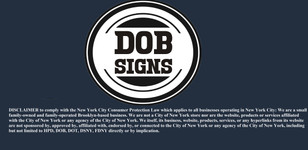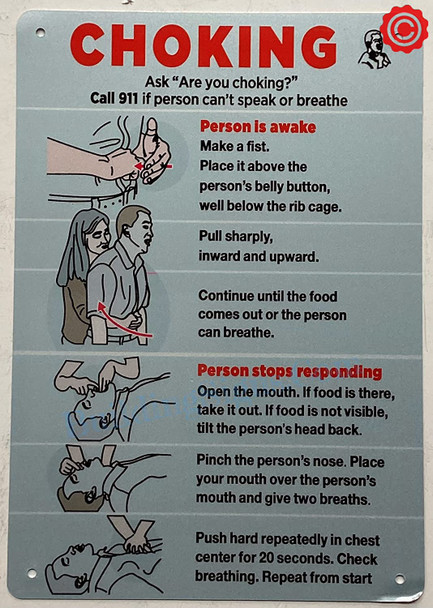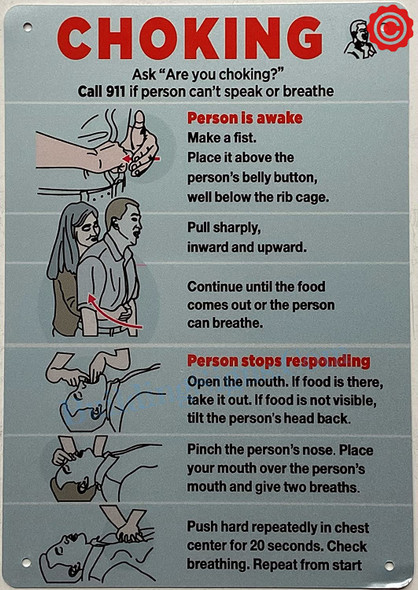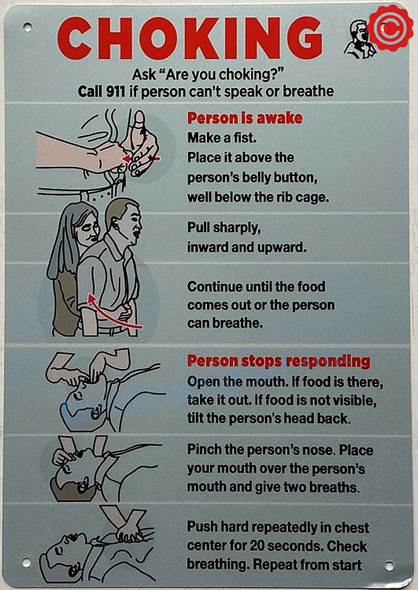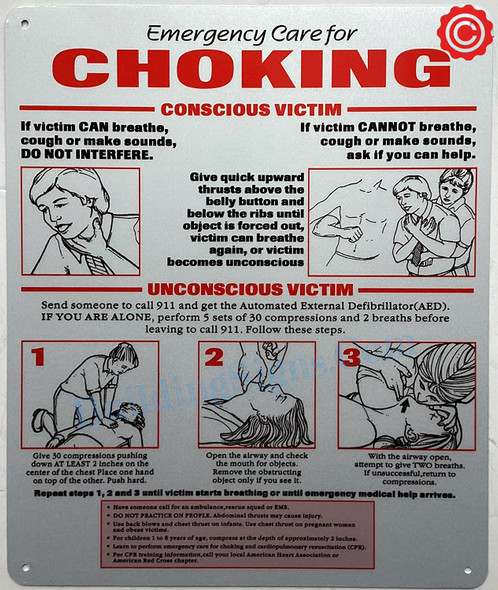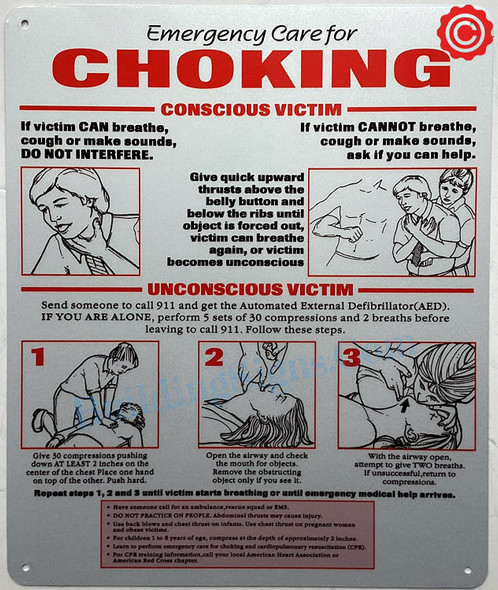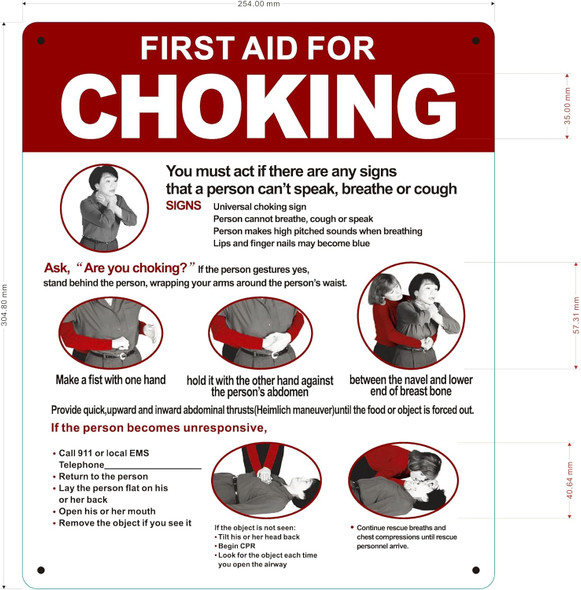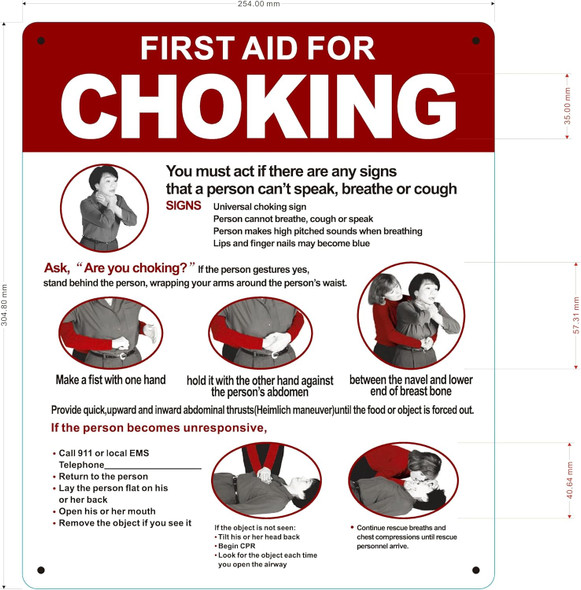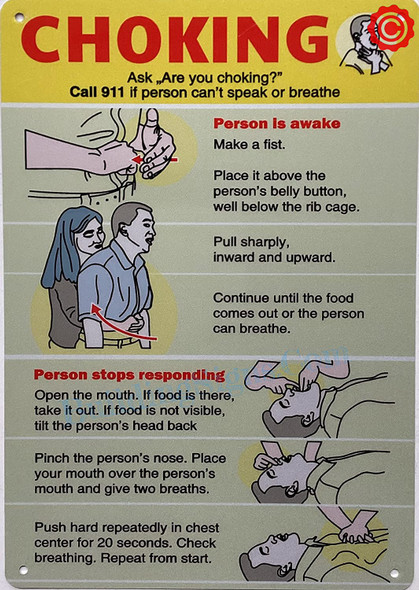BUILDINGSIGNS.COM
CHOKING POSTER SIGN - Resturant CHOKING POSTER SIGN (Blue REFLECTIVE. 10X12 INCH,HEAVY DUTY, RUST FREE, ALUMINIUM)
- UPC:
- 634578229893
- Availability:
- Usually Ship Within 2 days
Description
About this item
CHOKING POSTER SIGN - Resturant CHOKING POSTER SIGN
Size:10X12INCH
REFLECTIVE
RUST FREE- ALUMINIUM
COMMERCIAL USE
4 HOLES- WALL MOUNT
DESIGNED TO LAST
A "Choking Poster Sign" is a type of signage displayed in restaurants or other food establishments that provides detailed information on how to respond to a choking emergency. Unlike a simple Choking Notice sign, a Choking Poster Sign typically includes comprehensive instructions and illustrations to guide individuals in performing the Heimlich maneuver or other techniques to assist a choking person.
The Choking Poster Sign often features step-by-step instructions on how to recognize the signs of choking, how to properly position oneself to perform abdominal thrusts (also known as the Heimlich maneuver), and what to do if the person becomes unconscious. It may also include additional information on when to call for emergency assistance and where to find trained staff members or designated first aid responders within the establishment.
The purpose of a Choking Poster Sign is to provide clear and accessible guidance to both staff members and customers in the event of a choking emergency. By prominently displaying the poster, individuals can quickly reference the instructions to act promptly and effectively to help someone who is choking. This helps to create a safer dining environment and increase the chances of a successful response during such emergencies.
Choking Poster Signs are usually displayed in prominent locations within the restaurant, such as near the entrance, near dining areas, or in restrooms, where they can be easily seen and accessed by both staff and customers. The design and content of the sign may vary, but they commonly include clear illustrations, easy-to-follow instructions, and relevant emergency contact information.
It's important for restaurant owners or managers to ensure that the Choking Poster Sign aligns with local regulations, health and safety guidelines, and training requirements. It's advisable to consult with local authorities, health departments, or professional organizations to ensure compliance and effectiveness when displaying such signs.
DISCLAIMER to comply with the New York City Consumer Protection Law which applies to all businesses operating in New York City: We are small family-owned and family-operated Brooklyn-based business. We are not a City of New York store nor are the website, products or services affiliated with the City of New York or any agency of the City of New York. We ourselves, our business, websites, products, services, or any hyperlinks from its website are not sponsored by, approved by, affiliated with, endorsed by, or connected to the City of New York or any agency of the City of New York, including but not limited to HPD, DOB, DOT, DSNY, FDNY and federal directly or by implication. DISCLAIMER These codes may not be the most recent version. The State / federal or other regulation department may have more current or accurate information. We make no warranties or guarantees about the accuracy, completeness, or adequacy of the information contained on this site or the information linked to on the state site. Please check official sources. The requirements for sign content are determined by intended use and by applicable regulation. The BUYER is responsible for determining the appropriate content for a sign or package of signs. WE make no warranty or representation of suitability of a sign for any specific application. IT IS THE CUSTOMER'S RESPONSIBILITY TO ENSURE THAT THE SIGNS THE CUSTOMER ORDERS ARE IN COMPLIANCE WITH ALL STATE, FEDERAL, LOCAL, AND MUNICIPAL LAWS. Please review terms and conditions prior to purchase. For more information about what is required, see the laws that are referenced and the rules applicable to your city and state. This page is for informational purposes only and is not intended as legal advice, professional advice or a statement of law. You may wish to consult with an attorney.
